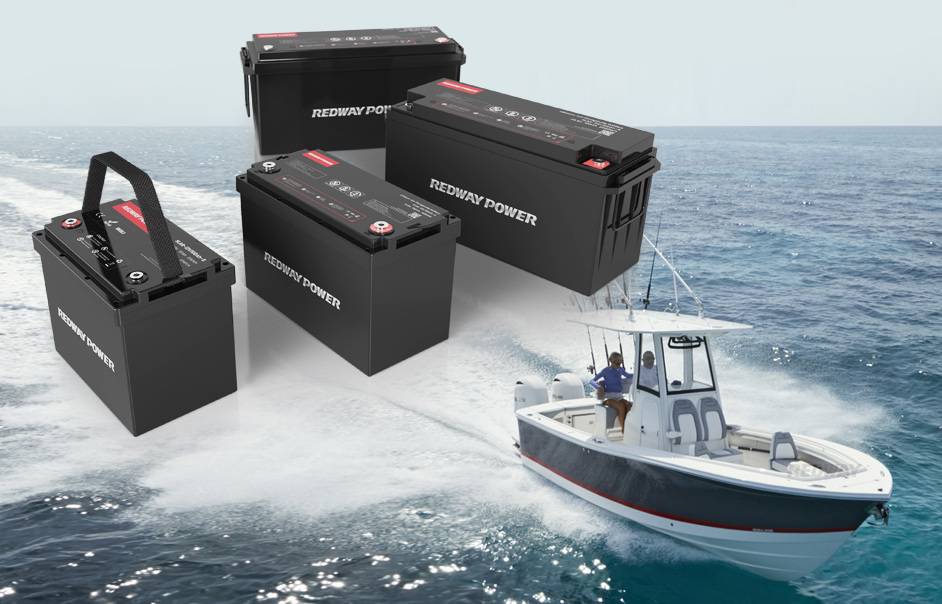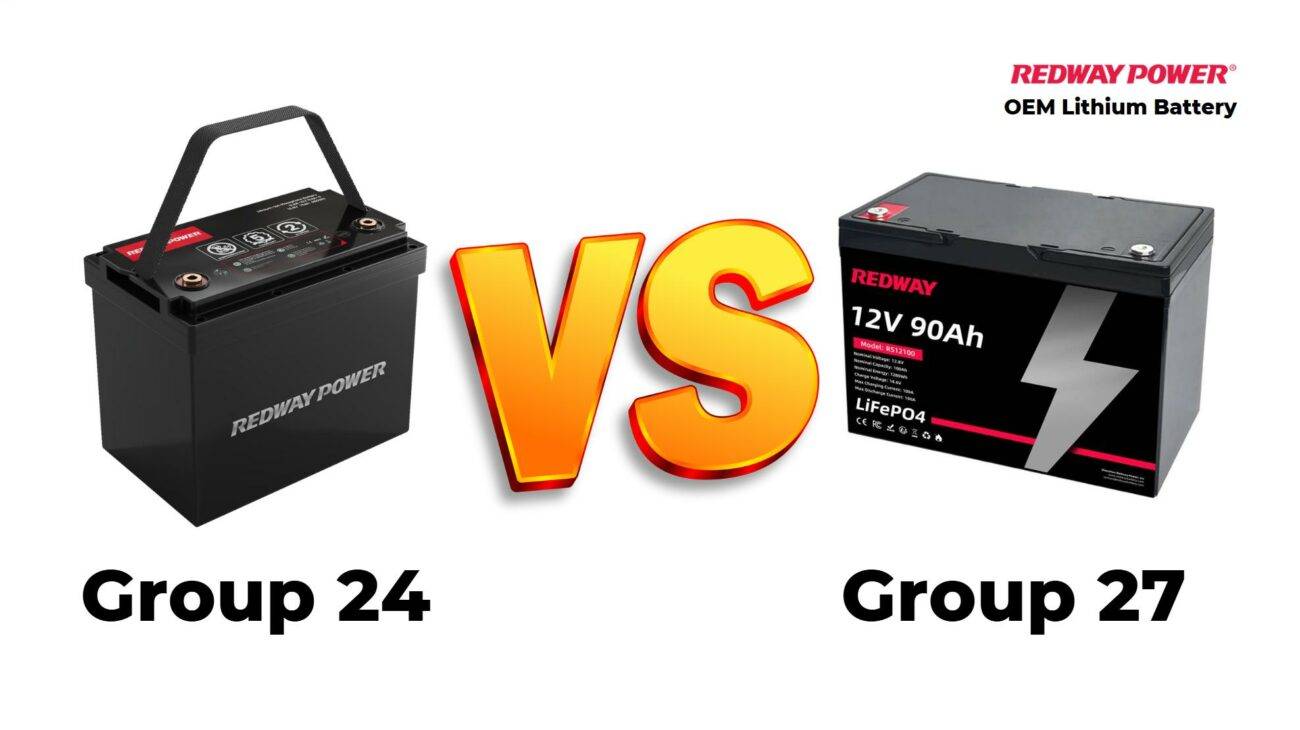- Forklift Lithium Battery
-
48V
- 48V 210Ah
- 48V 300Ah
- 48V 420Ah (949 x 349 x 569 mm)
- 48V 420Ah (950 x 421 x 450 mm)
- 48V 456Ah
- 48V 460Ah (830 x 630 x 590 mm)
- 48V 460Ah (950 x 421 x 450 mm)
- 48V 460Ah (800 x 630 x 600 mm)
- 48V 460Ah (820 x 660 x 470 mm)
- 48V 500Ah
- 48V 560Ah (810 x 630 x 600 mm)
- 48V 560Ah (950 x 592 x 450 mm)
- 48V 600Ah
- 48V 630Ah
-
48V
- Lithium Golf Cart Battery
- 12V Lithium Battery
12V 150Ah Lithium RV Battery
Bluetooth App | BCI Group 31
LiFePO4 Lithium
Discharge Temperature -20°C ~ 65°C
Fast Charger 14.6V 50A
Solar MPPT Charging - 24V Lithium Battery
- 36V Lithium Battery
- 48V Lithium Battery
-
48V LiFePO4 Battery
- 48V 50Ah
- 48V 50Ah (for Golf Carts)
- 48V 60Ah (8D)
- 48V 100Ah (8D)
- 48V 100Ah
- 48V 100Ah (Discharge 100A for Golf Carts)
- 48V 100Ah (Discharge 150A for Golf Carts)
- 48V 100Ah (Discharge 200A for Golf Carts)
- 48V 150Ah (for Golf Carts)
- 48V 160Ah (Discharge 100A for Golf Carts)
- 48V 160Ah (Discharge 160A for Golf Carts)
-
48V LiFePO4 Battery
- 60V Lithium Battery
-
60V LiFePO4 Battery
- 60V 20Ah
- 60V 30Ah
- 60V 50Ah
- 60V 50Ah (Small Size / Side Terminal)
- 60V 100Ah (for Electric Motocycle, Electric Scooter, LSV, AGV)
- 60V 100Ah (for Forklift, AGV, Electric Scooter, Sweeper)
- 60V 150Ah (E-Motocycle / E-Scooter / E-Tricycle / Tour LSV)
- 60V 200Ah (for Forklift, AGV, Electric Scooter, Sweeper)
-
60V LiFePO4 Battery
- 72V~96V Lithium Battery
- Rack-mounted Lithium Battery
- E-Bike Battery
- All-in-One Home-ESS
- Wall-mount Battery ESS
-
Home-ESS Lithium Battery PowerWall
- 24V 100Ah 2.4kWh PW24100-S PowerWall
- 48V 50Ah 2.4kWh PW4850-S PowerWall
- 48V 50Ah 2.56kWh PW5150-S PowerWall
- 48V 100Ah 5.12kWh PW51100-F PowerWall (IP65)
- 48V 100Ah 5.12kWh PW51100-S PowerWall
- 48V 100Ah 5.12kWh PW51100-H PowerWall
- 48V 200Ah 10kWh PW51200-H PowerWall
- 48V 300Ah 15kWh PW51300-H PowerWall
PowerWall 51.2V 100Ah LiFePO4 Lithium Battery
Highly popular in Asia and Eastern Europe.
CE Certification | Home-ESS -
Home-ESS Lithium Battery PowerWall
- Portable Power Stations
Why Are LFP Batteries a Great Choice for Marine Applications?
LFP batteries, or Lithium Iron Phosphate batteries, are increasingly recognized as a superior choice for marine applications due to their safety, longevity, and environmental benefits. Their unique chemistry allows them to perform exceptionally well under maritime conditions, making them ideal for powering boats and yachts.
What Are LFP Batteries and Their Key Features?
Lithium Iron Phosphate (LFP) batteries are a type of lithium-ion battery known for their stability and safety features. Unlike other lithium batteries that may pose risks of overheating or combustion, LFP batteries have a lower risk profile due to their thermal stability and robust chemical structure.Chart Title: Key Features of LFP Batteries
| Feature | Description |
|---|---|
| Safety | Lower risk of thermal runaway |
| Lifespan | Typically lasts 2000+ cycles |
| Environmental Impact | Non-toxic materials |
| Efficiency | High charge/discharge efficiency |
Why Are LFP Batteries Considered Safe for Marine Use?
Safety is paramount in marine applications where conditions can be unpredictable. The thermal stability of LFP batteries means they can withstand high temperatures without degrading or posing fire risks, making them suitable for use on boats where safety is critical.Chart Title: Safety Comparison of Battery Types
| Battery Type | Risk Level (1-10) | Thermal Stability |
|---|---|---|
| Lead-Acid | 7 | Moderate |
| Nickel-Metal Hydride | 6 | Moderate |
| Lithium-Ion | 8 | Low |
| Lithium Iron Phosphate | 2 | Very High |
How Long Can You Expect an LFP Battery to Last in a Marine Environment?
LFP batteries are known for their impressive lifespan, often exceeding 2000 charge cycles with proper care and maintenance. This longevity makes them a cost-effective solution over time, as they require less frequent replacement compared to traditional lead-acid batteries.
What Makes LFP Batteries Ideal for Marine Applications?
Several factors contribute to the suitability of LFP batteries for marine use:
- Weight-to-Power Ratio: They provide significant power without adding excessive weight.
- Deep Discharge Capability: They can be discharged deeply without damaging the battery.
- Efficiency: High efficiency leads to less energy waste during charging and discharging.
Know more:
How Does LFP Self-Discharge Rate Compare to Other Lithium-Ion Batteries?
Why Are LFP Batteries a Great Choice for Marine Applications?
What Is the Energy Density of LFP Batteries and How Does It Benefit Marine Use?
How Does LFP Battery Cycle Life Compare to Other Batteries?
Why Have LFP Batteries Become Popular in the Marine Industry?
How Do LFP Batteries Compare to Other Battery Technologies in Boats?
When compared to traditional lead-acid or even other lithium technologies, LFP batteries offer several advantages:
- Longer Lifespan: As mentioned earlier, they outlast lead-acid by several years.
- Lower Maintenance: They require minimal maintenance compared to other battery types.
Chart Title: Comparison of Battery Technologies
| Technology | Lifespan (Cycles) | Maintenance Level |
|---|---|---|
| Lead-Acid | 500-800 | High |
| Nickel-Metal Hydride | 1000 | Moderate |
| Lithium-Ion | 1000-1500 | Low |
| Lithium Iron Phosphate | 2000+ | Very Low |
What Environmental Benefits Do LFP Batteries Offer for Marine Use?
LFP batteries are composed of non-toxic materials that do not pose environmental hazards during disposal or leakage, making them an eco-friendly choice compared to lead-acid batteries that contain harmful substances.
How Can LFP Batteries Enhance Energy Efficiency in Boats?
The high charge/discharge efficiency of LFP batteries means that more energy is utilized effectively during operation, leading to improved overall energy management on board.
What Installation Considerations Should You Keep in Mind for LFP Batteries in Marine Applications?
When installing an LFP battery system on a boat, consider factors such as:
- Space Requirements: Ensure adequate space is available.
- Ventilation: Although safer than other types, proper ventilation is still recommended.
- Battery Management System (BMS): A BMS helps monitor performance and extend battery life.
How Does Temperature Affect the Performance of LFP Batteries at Sea?
Temperature fluctuations can impact battery performance; however, one advantage of LFP technology is its ability to operate effectively across a wide temperature range compared to other lithium-ion options.
Expert Views
“Choosing Lithium Iron Phosphate batteries represents a significant advancement in marine energy storage technology,” says an expert from Redway. “Their safety features and longevity not only enhance performance but also align with eco-friendly practices essential in today’s boating industry.”
Conclusion
In summary, Lithium Iron Phosphate (LFP) batteries stand out as an optimal choice for marine applications due to their safety, longevity, efficiency, and environmental benefits. As boat owners seek reliable energy solutions that enhance performance while being mindful of safety and ecological impact, adopting LFP technology becomes increasingly advantageous.
FAQ Section
- What are the main advantages of using LFP batteries in boats?
The main advantages include enhanced safety features, longer lifespan (2000+ cycles), lower maintenance requirements, and environmental friendliness. - Can I use regular chargers with my marine LFP battery?
It’s recommended to use chargers specifically designed for lithium technologies that accommodate the unique charging characteristics of LFP batteries. - How do I maintain my marine battery system?
Regularly check connections, ensure proper ventilation during operation, and monitor battery performance through a Battery Management System (BMS).
















